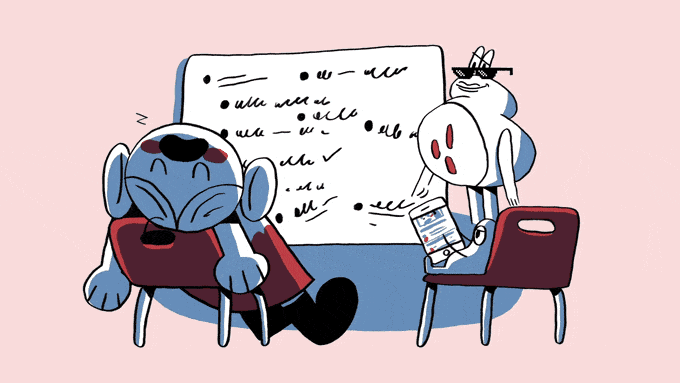“This will be the dullest presentation ever!”
Tom’s dreading his next department meeting at the University. He’s been asked to share a stakeholder analysis over Zoom with 70 people. It’s important but potentially super-dull. “I could imagine the bored faces,” Tom says, “as I try to present the Miro board.”
Instead, Tom picks up his deck of Storyteller Tactics. He goes to the Recipe cards and mixes up Stories that Explain and Stories that Convince. And then…
First slide: a big, fat puzzling statement.

It’s a classic Story Hook.
- Question (which invites us to stick around for the answer)
- Unexpected (“Wait, the US army? What’s that got to do with us?”)
- Knowledge (I’ve drawn a lesson from their mistake)
Tom’s next slides create a rich visual story (Movie Time). The desert camouflage worn by US soldiers in Iraq didn’t work. Dark coloured guns and equipment stood out against the light fabric. So the army spent billions designing a universal camo – a mix of light and dark pixels. It was supposed to work everywhere. It actually worked nowhere.

One soldier told his bosses that the camo was great – if you were trying to hide yourself against an old lady’s sofa. Look closely at this photo!

It was a brilliant Rolls Royce Moment in the presentation: a vivid, relatable example that told you everything you needed to know about the failed project. Tom also raised an instant laugh. Never underestimate the power of humour to make your story stick (see That’s Funny)
And then Tom gives his audience the moral of his story: this is what happens when you don’t engage with your stakeholders. “What goes for the US army goes for our organisation too. So here’s what we’ve done about it…”
Tom goes into his stakeholder analysis. Without revealing any commercial confidences, it’s a good overview. Tom shows four examples of stakeholders, and how they split on a Power/Interest matrix (yes, that’s a Workshop Tactic!).
Then he zooms out to show how he mapped 140 more stakeholders (that’s a Data Detective tactic).

He’s careful not to put too much text on screen at one time (that’s a Show and Tell tactic), so his audience stays focused on what he’s saying. After all, he’s the star of this show.
Tom’s presentation got what he needed: awareness and reassurance. People knew he’d done the analysis and why it mattered. The subtext of his presentation: “I’ve done the hard graft, so you don’t have to. Any questions, come and find me. Otherwise, trust my judgement.”
Within minutes, Tom’s phone is pinging with praise. “Brilliant, you really got my attention”, “Well done Tom, you should teach us all how to present like that” and “Someone’s been watching TED talks!”
That’s what stories can do for your next presentation.
Storyteller Tactics I used to write this blog:
Emotional Dashboard: highlight the fear and boredom surrounding Tom’s task.
Five Ts’: start the story at the moment of greatest tension.
Happy Ever Afters: Tom was anxious but gained respect by the end. Nice.


If you leave us your email, we'll let you know if we update this guide based on your feedback.